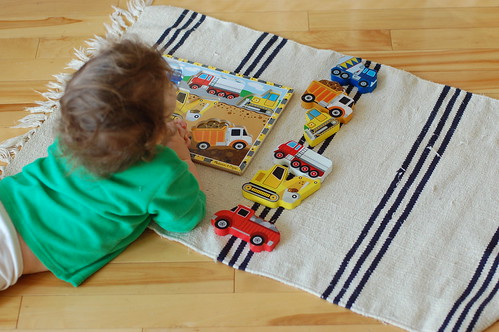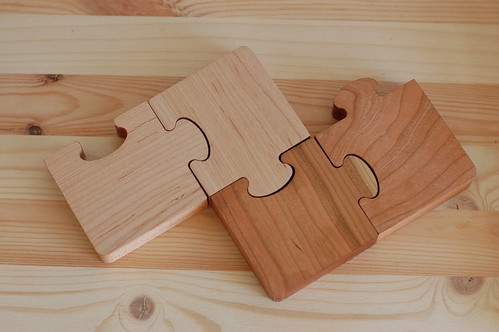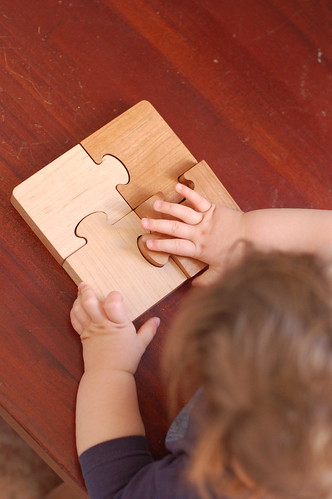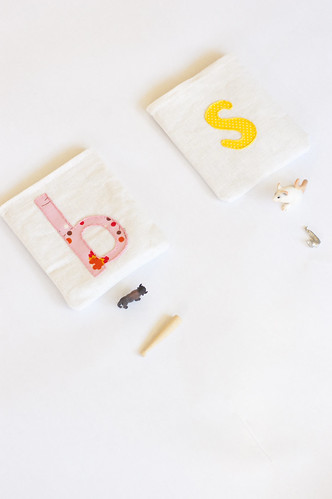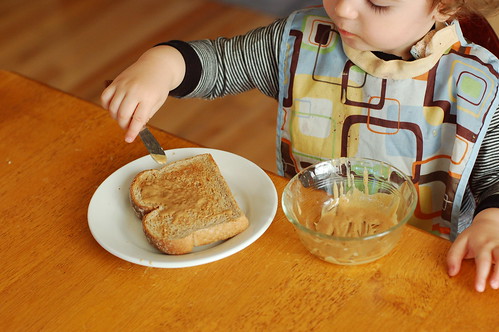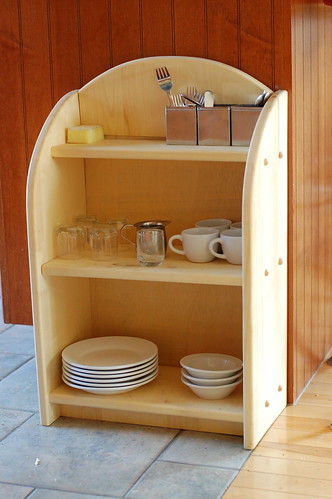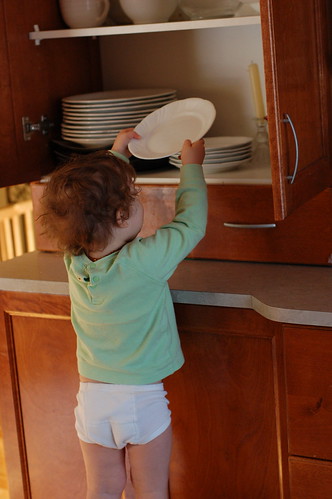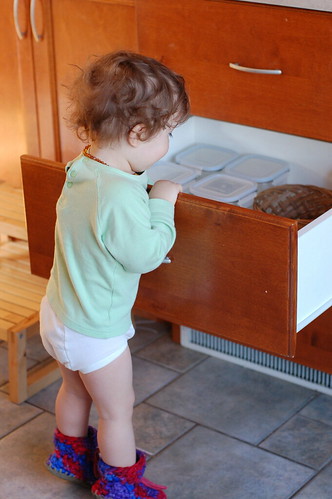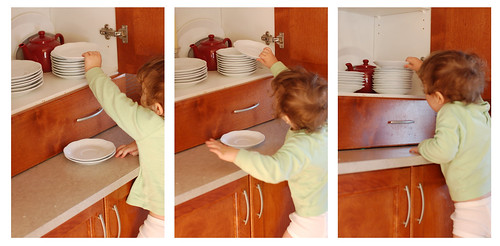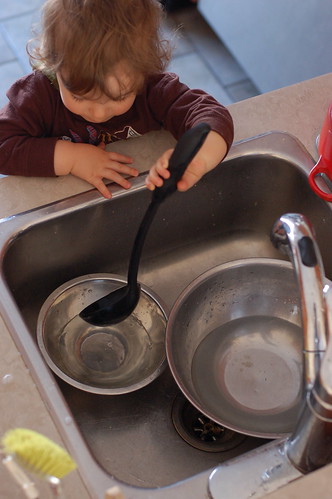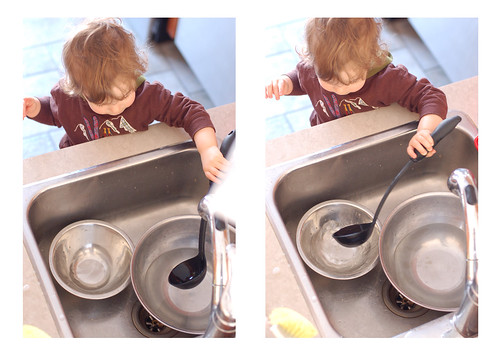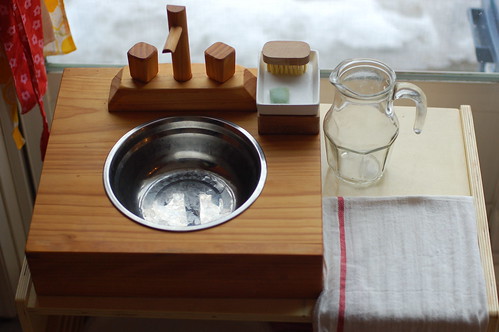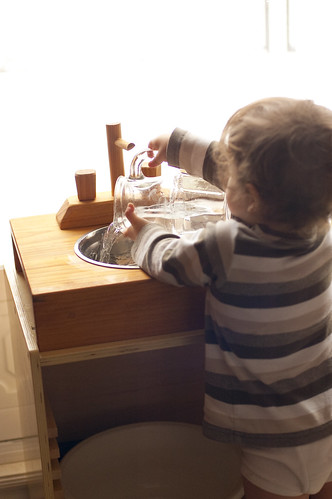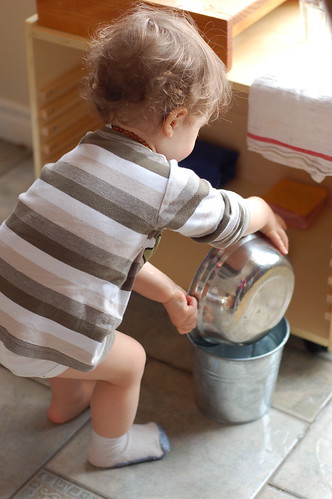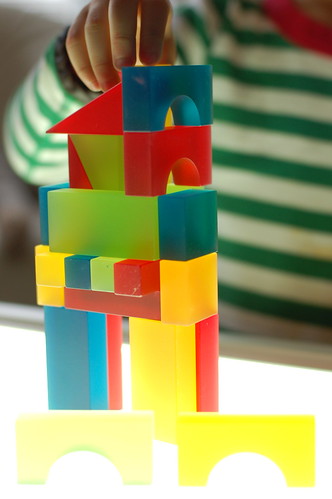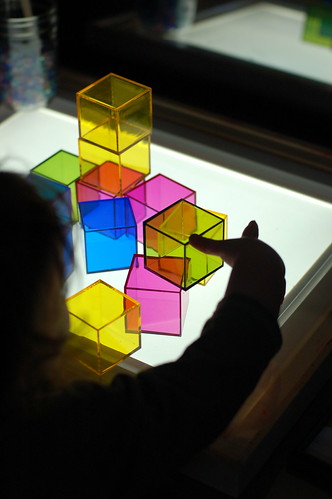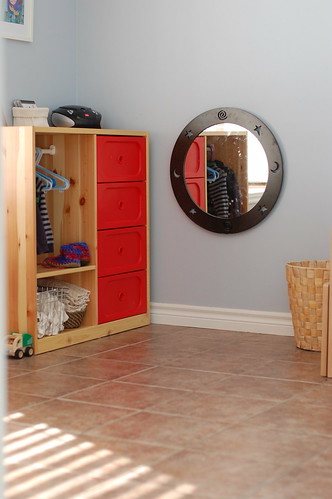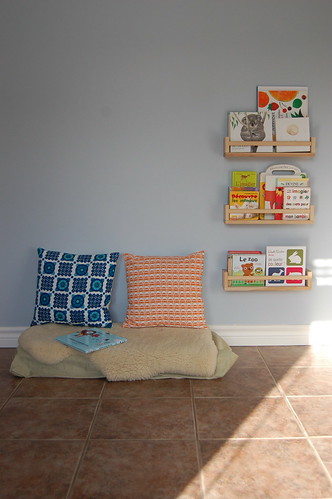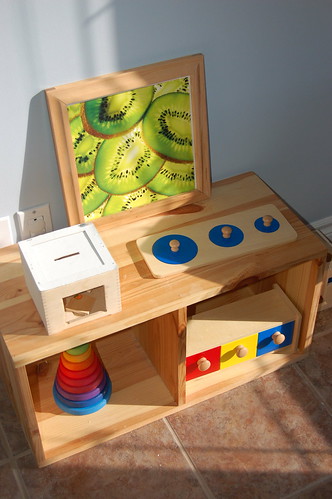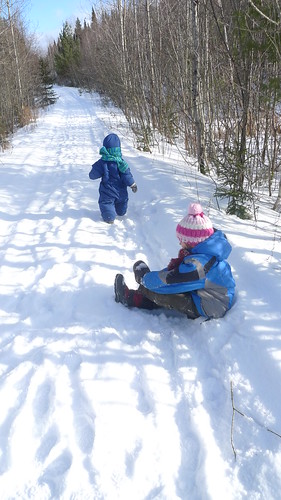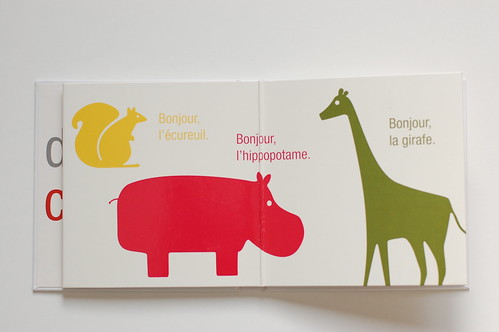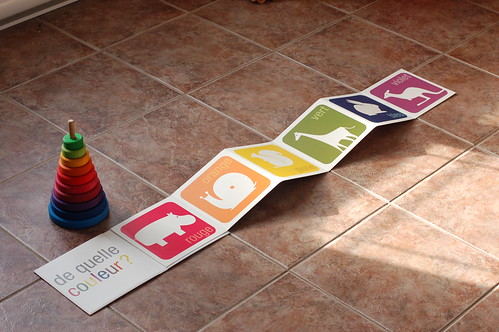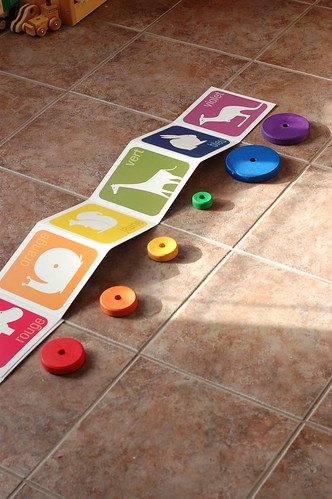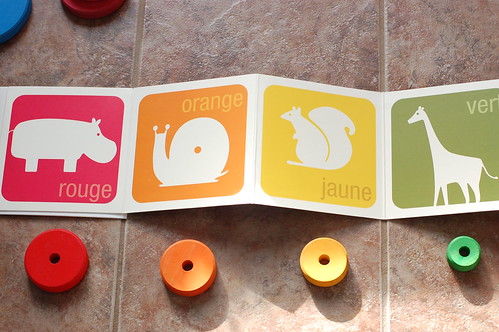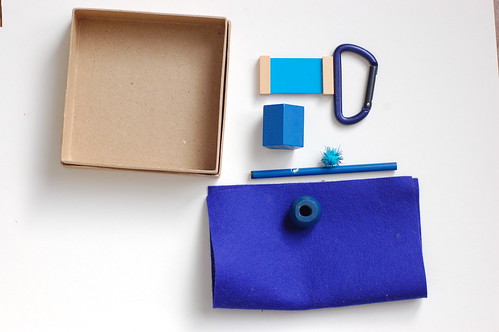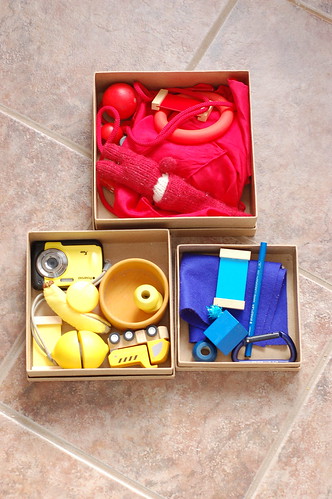I had a question about the hand washing activity I have set up for E a few days ago through email that reminded me of the feeling I had, when I started out in Montessori, a feeling of inadequacy that lingered over me every time I was looking at blogs. That feeling of not being able to make this work like others did. And it inspired this post, hoping that it can be helpful to parents that are feeling overwhelmed.
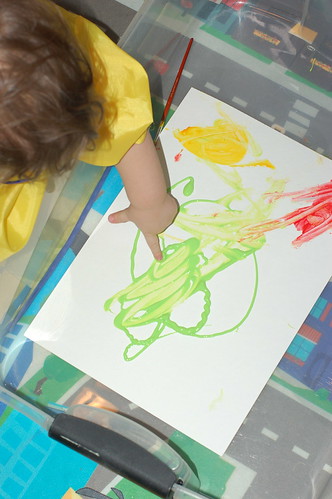 |
| Learning to work within a contained space |
I remember the first time I entered a Montessori facility, I was fascinated. I couldn't believe what I was seeing. Young children truly concentrated onto a task, working with a precision that is not usually attributed to children this age. I had no other explanation then magic to understand what I was seeing.
 |
| scrubbing with a brush - 13 months old |
After years of living by the Montessori philosophy, and reading about it, I now understand that there is no magic, except maybe the fact that Dr Montessori was able to understand the very basis of childhood through careful observation and thus answer many of the the questions we have about early childhood and the formation of man with outstanding clarity. But seeing a tiny children be able to perform standard Montessori tasks (there is so many of them, just pick one!) is still fascinating to anybody who witnesses it.
But how does this happens?
I can say at this point that it is through no miracle, but through careful observation and preparation of the child before he is presented the activity. And that is the information that most blog post lack, because of the difficulty to capture it and explain it, making it a little unsettling for newcomers in the Montessori pedagogy.
 |
| precision in handeling material - about 9 months ago |
When I presented the hand washing activity to E, it was because I knew he was ready. I had figured out what are the steps and the skills required to master this activity. (In this case, pouring, scrubbing, drying hands, not putting soap in his mouth, and making sure that water stays in the bowl when manipulating water) I knew that he had mastered all these component, and that the only thing left he had to do was to combine them all to carry out this specific task. Would I have just presented this to him without ensuring that he would be able to carry it out, he would most likely have failed, due to my misjudging.
 |
| Pouring his own drink at 19 months |
And this was something that was very confusing to me at the beginning. Looking at blogs, I was very impressed but most of all discouraged to see these children could do. I think this was mainly because I didn't know what was done before to prepare them to a certain task, since this information was never disclosed, or even mentioned.
I was only able to see how my children would fail this specific task I had just seen if I gave it a chance. And it most likely would have, as the previous preparation was not done. It is by reading M. Montessori herself that I finally understood that just following a certain blog or just trying out activities that seems ingenious was not going to guarantee any success for my own children, and that there was more to it that meet the eyes.
 |
| Playing in water - last summer, almost one year ago. |
I have just finished reading the book The Formation of Man. I am so glad I took the time to read this book. It has shed the light onto another topic that added to my confusion and that escalated my fear and feeling of inadequacy.
The goal of the work we are proposing to children, is not the successful completion of the task. It is not to have them know and be able to perform all sorts of things. That is just an added bonus, this is the mean by which the true goal is reached.
The true goal of it all is the formation of men that is taking place during the early years. This formation is taking place unseen, on it's own timetable, and this is the true magic of Montessori. It is the allowing of this task to be completed, without hindrance, by the environment, by our actions and by the knowledge we have about the process (which is not much) that is important. It doesn't matter that the activity was successful or not, that somebody's toddler was able to perform a specific task before my own. What matters is the process, that is essential to the formation of our children into men (and woman).
When I finally grasped that concept, I was able to let go of blogs, and just follow my children. It removed a weight of performance that is not necessary, and dare I say "dangerous" to this process my children are going through.
I hope this was somehow helpful to other parents that wants to tackle Montessori in their home but just feel overwhelmed, mostly when reading blogs.
I think it is normal to feel this way. Most of us have not been raised this way, and all of this might not come naturally to us. But with time, patience and reading (books), understanding comes along. I feel it is well worth the time and efforts.
For more reading on this topic, I would refer you to many of the books that M. Montessori has written. She often speaks about the sequence of event that leads to the explosion of writing, and she goes into great details about it. I think this illustrates better then I ever could the importance of sequencing of activities towards a goal. I have just read about it again in the Formation of Man, and I think she also discusses it in the Montessori method. If you know any other source for that information, leave a comment!


